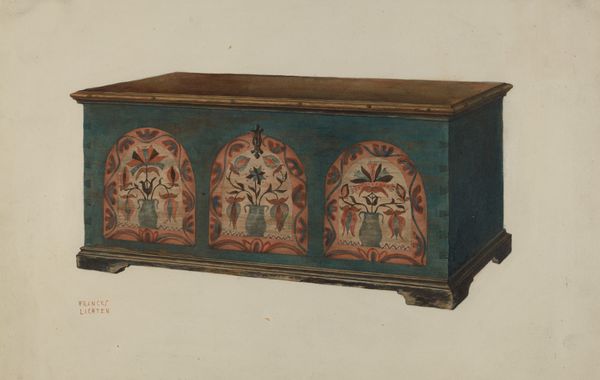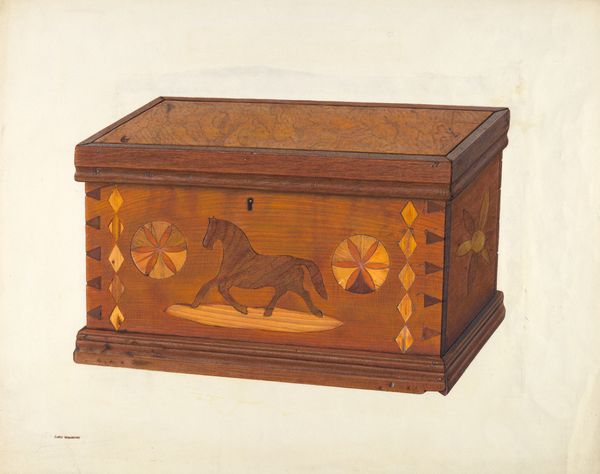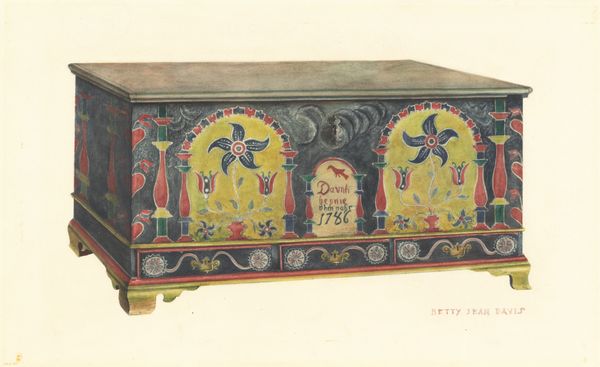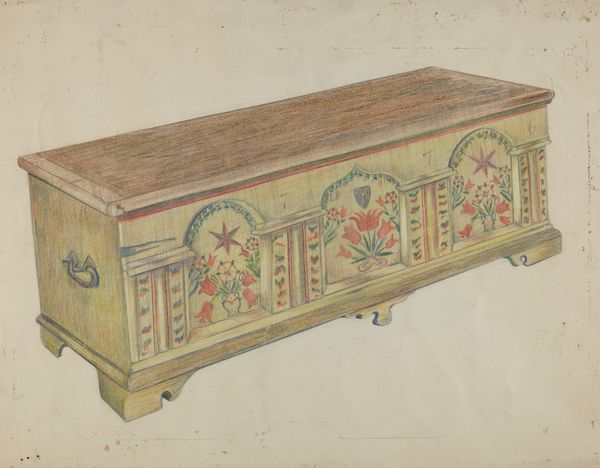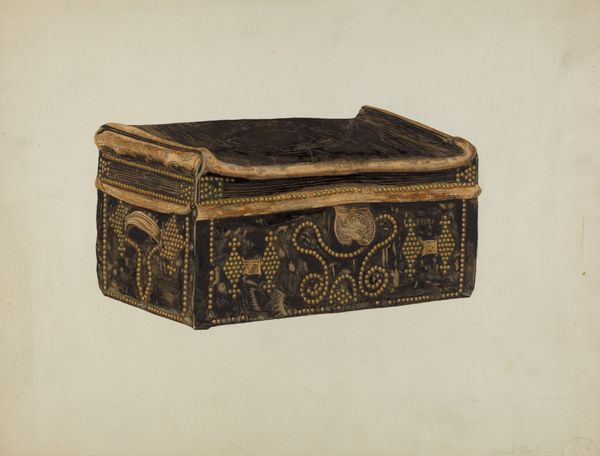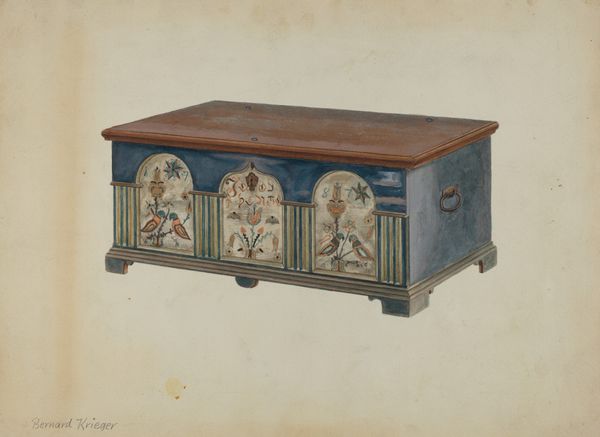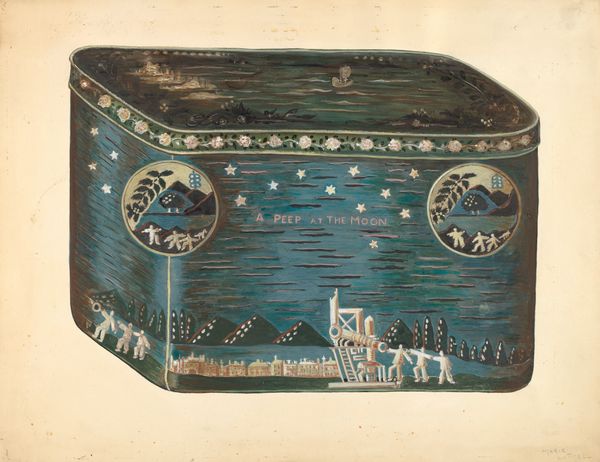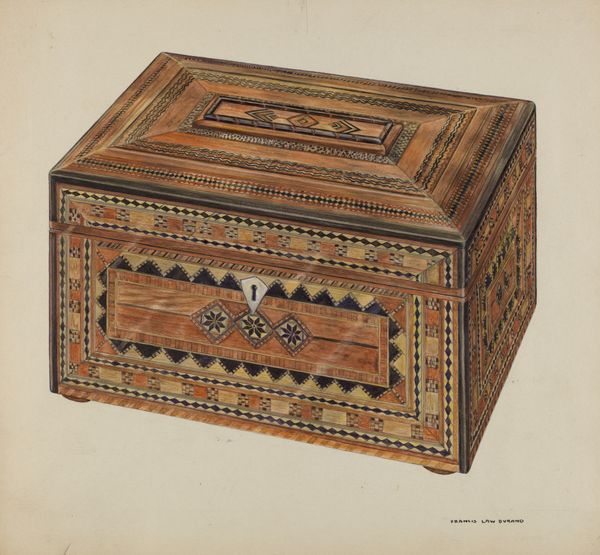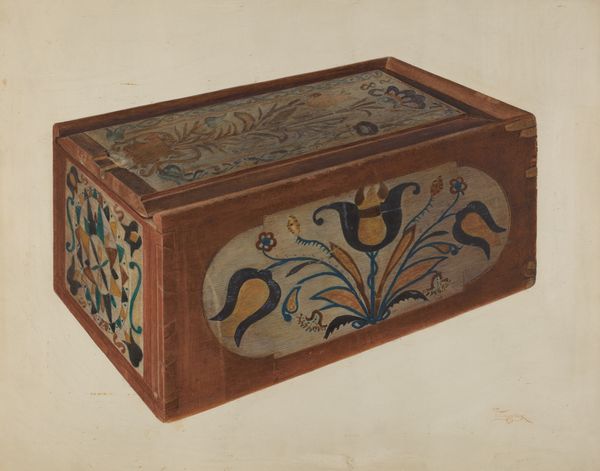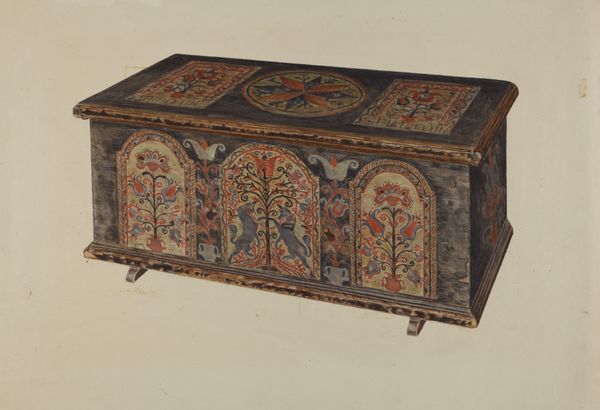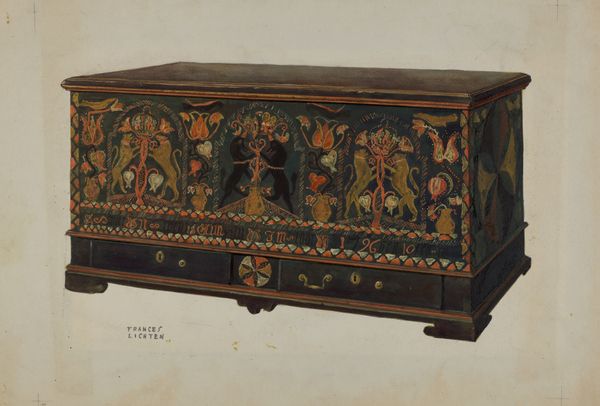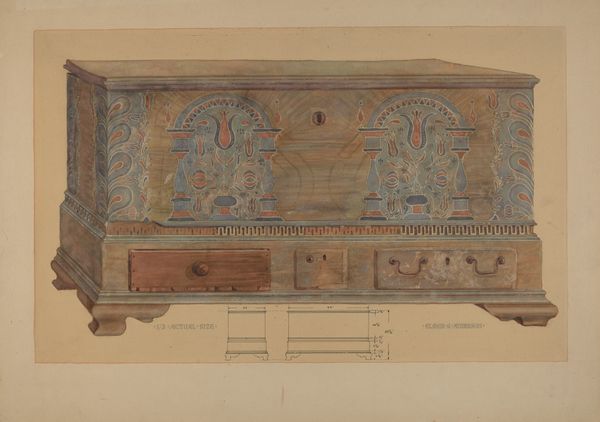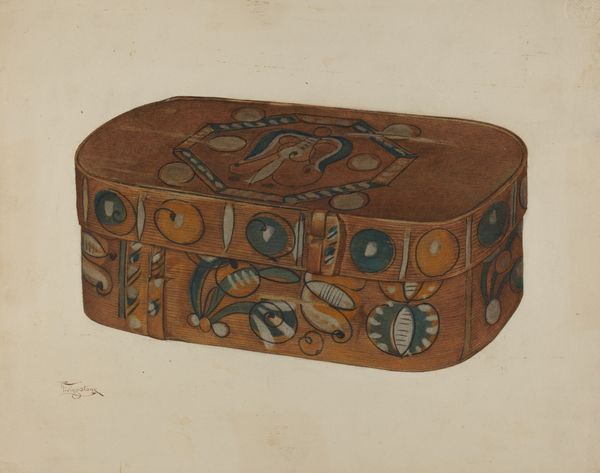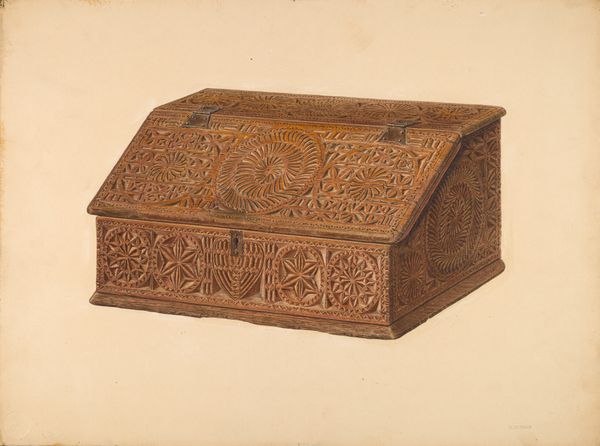
drawing, tempera, oil-paint, watercolor
#
drawing
#
narrative-art
#
tempera
#
oil-paint
#
oil painting
#
watercolor
#
folk-art
#
watercolour illustration
#
genre-painting
#
history-painting
#
decorative-art
Dimensions: overall: 35.2 x 46.8 cm (13 7/8 x 18 7/16 in.)
Copyright: National Gallery of Art: CC0 1.0
Curator: This tempera, watercolor, and oil-paint piece from John Koehl, titled "Bridal Chest," dates from between 1935 and 1942. What stands out to you initially? Editor: Honestly? It reminds me of a sophisticated child's block! The simplified figures, the almost playful use of color… There's something incredibly charming and nostalgic about it. Curator: Nostalgia plays a significant role, especially considering the work fits within the folk-art tradition. Koehl's engagement with genre and history painting blends decorative and narrative elements, a hallmark of much American folk art from that era. Editor: Narrative, definitely. I'm reading little stories into each side of the box. Like the fellow with the horn seems to be hunting… maybe a marriage dowry scene, promising provision and prosperity? And what's the deal with the little floating lock beside the stag? Curator: Interesting. You are drawing upon potential narratives woven into the iconography. These pieces hint at stories without explicitly telling them. Given the title "Bridal Chest," it prompts reflections on material culture and domesticity in early 20th-century America. Such chests were vital storage for personal items and represented the future life of a bride. Editor: I can definitely see the chest serving as a symbolic vessel. I can almost smell the cedar. Still, the directness, the flatness, of the figures almost renders a serious piece delightfully folksy! Curator: Precisely, that perceived ‘flatness,’ often self-taught or vernacular artistic skills. Yet, the visual vocabulary speaks volumes about value systems, social roles and class. Its creation during the Great Depression also positions the work amid considerable upheaval and reflects a search for national identity, in which rural life and craft held a special position. Editor: And that simple handle on the lid just begs to be lifted, doesn’t it? It transforms this thing, this 'artwork', into a container filled with… what? Expectations? Promises? An American fairytale? Curator: Indeed, Koehl provides us not just with a piece of art, but a vessel containing broader histories and individual experiences. It reflects social expectations, artistic practice, and that uniquely homespun feeling! Editor: Makes me want to fill it with handwritten letters, secrets and wildflower seeds.
Comments
No comments
Be the first to comment and join the conversation on the ultimate creative platform.
